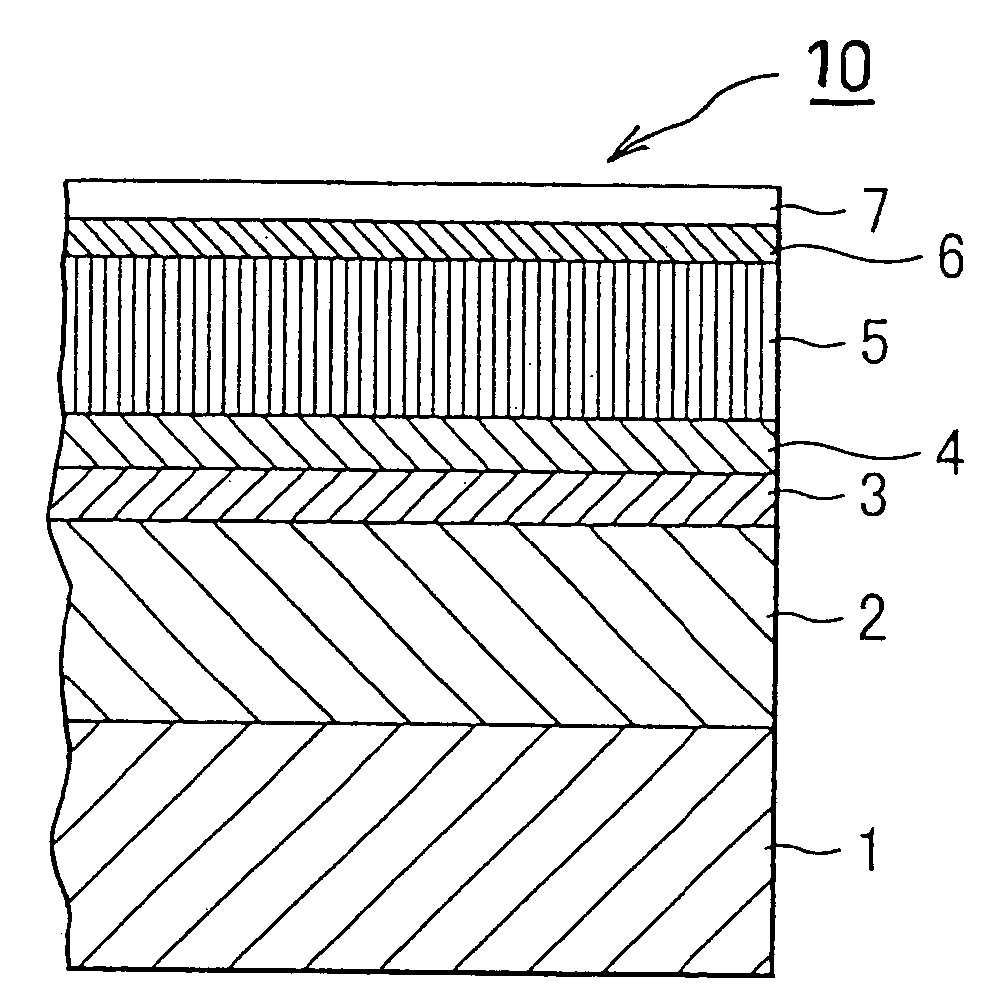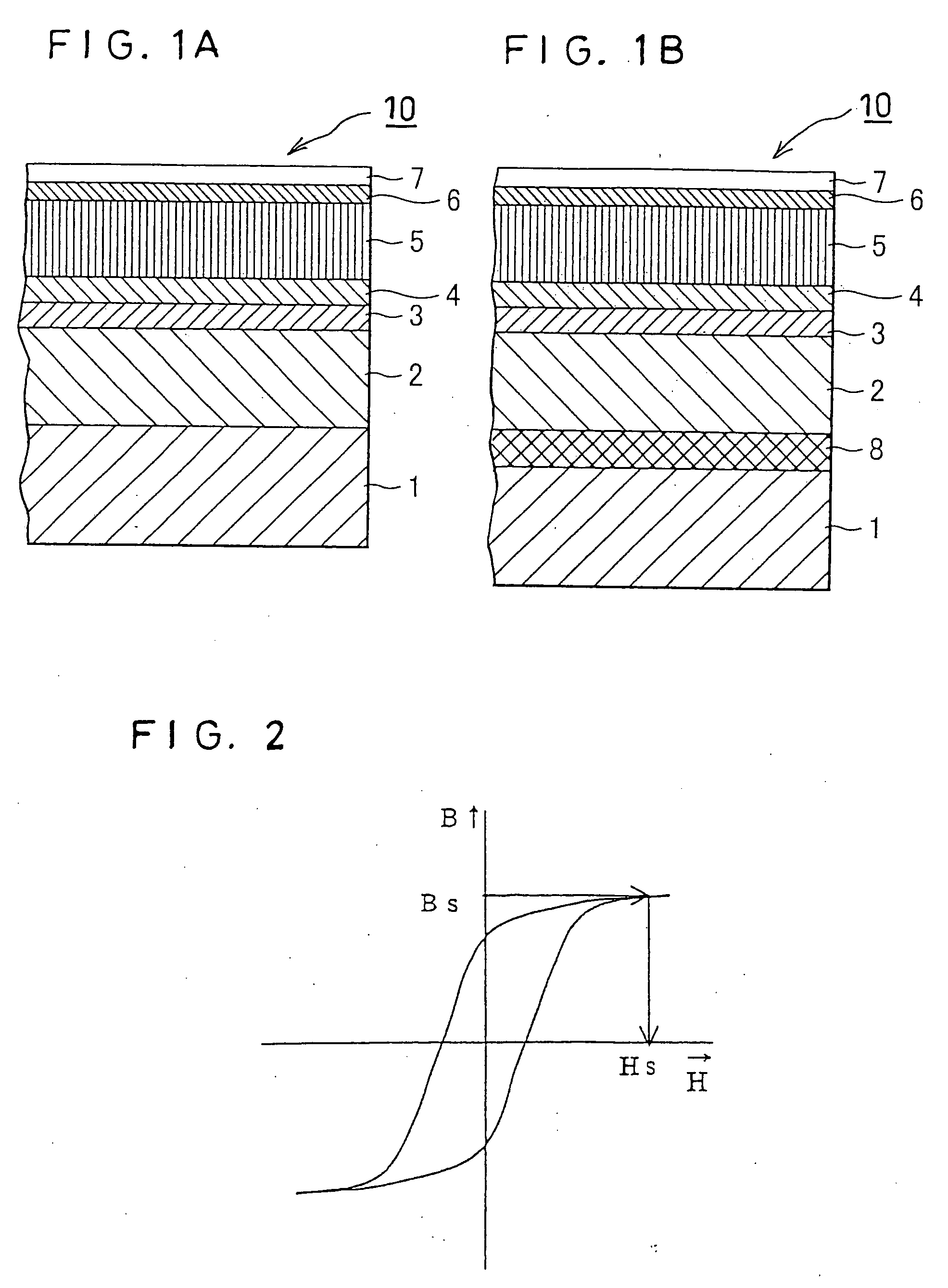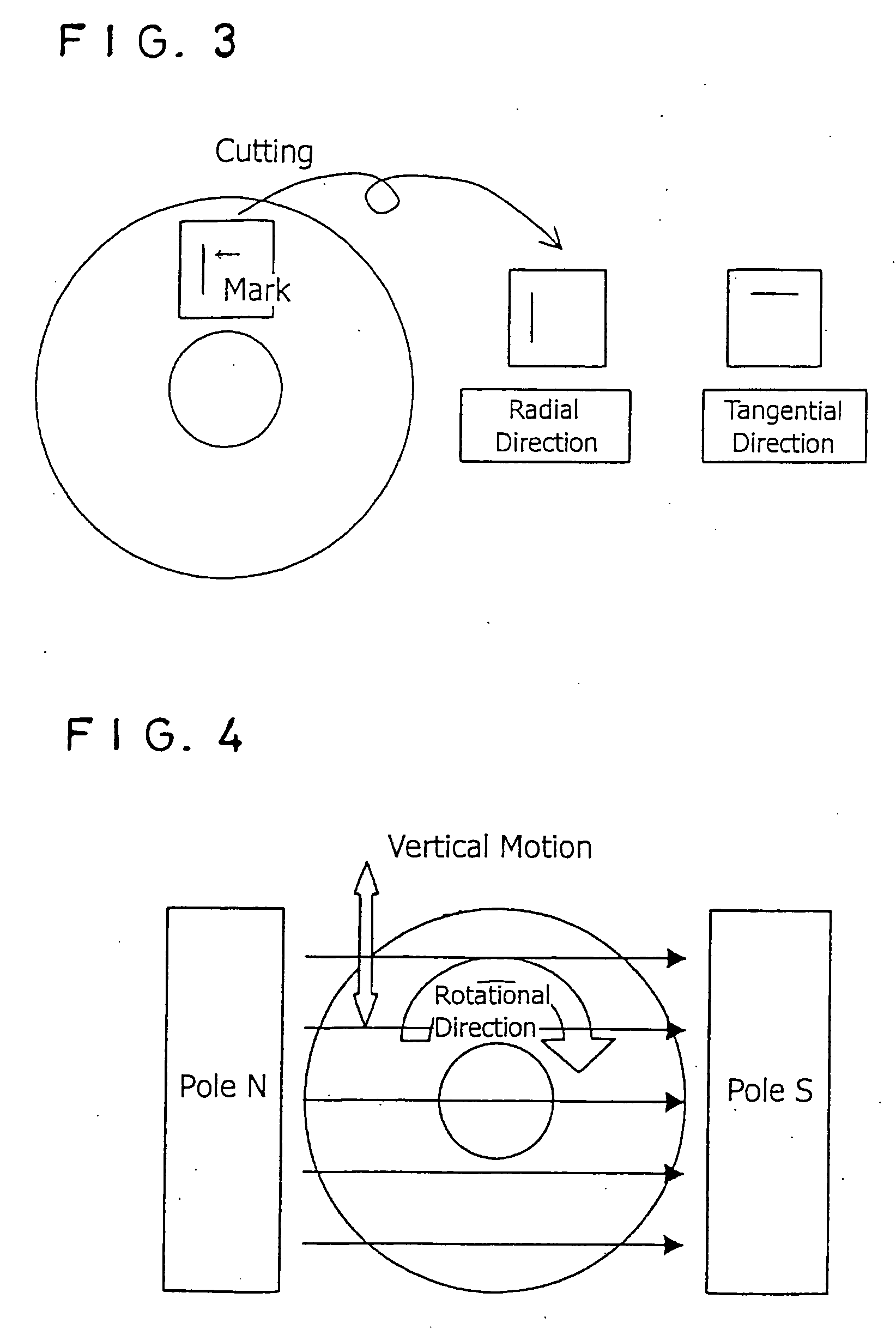Perpendicular magnetic recording medium, production process thereof, and perpendicular magnetic recording and reproducing apparatus
a technology of perpendicular magnetic recording and production process, applied in the direction of magnetic materials for record carriers, instruments, record information storage, etc., can solve the problems of demagnetization, adverse effects attributed to such phenomena, weakening of magnetization, etc., to achieve high thermal stability, excellent noise characteristics, and high density recording
- Summary
- Abstract
- Description
- Claims
- Application Information
AI Technical Summary
Benefits of technology
Problems solved by technology
Method used
Image
Examples
example 1
[0105] A glass substrate having an average surface roughness (Ra) of 0.5 nm or less was subjected to chemical cleaning, and subsequently, by means of DC magnetron sputtering, an adhesion layer constituted by a Ti layer (thickness: 10 nm) and a seed layer constituted by an Ni layer (thickness: 20 nm) were successively formed. Subsequently, the resultant layered product was subjected to a conventional preliminary treatment, and then a CoNiFeP soft magnetic layer (thickness: 3,000 nm) serving as an undercoat layer was formed by use of an electroless plating solution shown in Table 1.
[0106] An example of the apparatus 11 for forming the soft magnetic layer is shown in FIG. 5. A plating bath 18 filled with a plating solution is placed in a water tank 12, and glass substrates 20 on which the seed layer has been formed and which are retained on a substrate retainer 19 equipped with a rotary mechanism (not shown) are immersed in the plating solution within the plating bath 18. The substrat...
example 2
[0112] The procedure of Example 1 was repeated, except that the intensity of the external magnetic field applied during the course of plating was changed from 35 G to 100 G (neodymium-iron-boron magnets). Table 4 shows the results; i.e., Bs, the degree of isotropy, perpendicular magnetic anisotropy, MF-S / N ratio, and the presence / absence of magnetic domain walls.
example 3
[0113] The procedure of Example 1 was repeated, except that the composition of the plating solution was changed as shown in Table 2. Table 4 shows the results; i.e., Bs, the degree of isotropy, perpendicular magnetic anisotropy, MF-S / N ratio, and the presence / absence of magnetic domain walls.
PUM
| Property | Measurement | Unit |
|---|---|---|
| saturated magnetic flux density | aaaaa | aaaaa |
| saturated magnetic flux density | aaaaa | aaaaa |
| crystal grain size | aaaaa | aaaaa |
Abstract
Description
Claims
Application Information
 Login to View More
Login to View More - R&D
- Intellectual Property
- Life Sciences
- Materials
- Tech Scout
- Unparalleled Data Quality
- Higher Quality Content
- 60% Fewer Hallucinations
Browse by: Latest US Patents, China's latest patents, Technical Efficacy Thesaurus, Application Domain, Technology Topic, Popular Technical Reports.
© 2025 PatSnap. All rights reserved.Legal|Privacy policy|Modern Slavery Act Transparency Statement|Sitemap|About US| Contact US: help@patsnap.com



